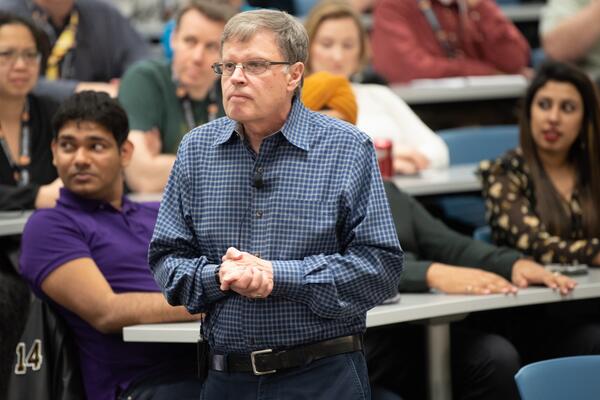
Neither snow nor rain ...
Canada’s first autonomous, all-weather delivery robot may soon be bringing pizza to students

Canada’s first autonomous, all-weather delivery robot may soon be bringing pizza to students
By Carol Truemner Faculty of EngineeringUniversity of Waterloo students may soon be able to order pizza or a burger from a nearby plaza and have it brought to campus by Canada’s first all-weather autonomous delivery robot.
LoopX, a Waterloo Engineering startup company that is developing the technology to do just that, received a $30,000 funding boost recently when it took top prize in the 5G Transportation Challenge sponsored by Rogers and the Ontario Vehicle Innovation Network.
As the challenge winner, LoopX is also benefiting from technical support from Rogers and its partners to develop a 5G Multi-access Edge Computing system (MEC) that gives software developers cloud-computing capabilities which are close to the end users.

LoopX customers will be sent a code to unlock the compartment containing their order.
Within the next three months, LoopX - also a recipient of funding from the Engineer of the Future Fund at Waterloo Engineering - plans to demonstrate its 5G MEC-based hybrid driving system in the David Johnson Research + Technology Park.
The last stage of the transportation challenge included pitches by the top five of over 20 registered small and medium-sized enterprise (SME) groups in Ontario.
“While most of the companies competing have been in business for over 10 years, LoopX just launched last year,” says founder Chao Yu, a mechatronics engineering doctoral candidate. “There are a lot of factors that helped us be successful including all the autonomous vehicle expertise at the University. Most of the LoopX team members are involved in the University’s WATonoBus, the first all-weather 5G autonomous shuttle bus at a Canadian university.”
Although there are other autonomous delivery robots, Yu says his company is unique because its advanced chassis control techniques, cutting-edge autonomous driving algorithms and datasets gathered in harsh Canadian winters provide a reliable all-weather delivery service.
Its bright red, 1.2 m X .8 m X 1.2 m delivery vehicle is equipped with multiple safety features, such as an audible signal for pedestrian safety, and remote and on-board e-stops.

Members of LoopX pose for a group photo after winning $30,000 in the 5G Transportation Challenge.
Its autonomous driving features include two LiDARs, eight ultrasonic sensors, and eight monocular cameras, as well as a GNSS module that delivers 360-degree perception and centimetre-level positioning.
Yu, a member of the Mechatronic Vehicle Systems Lab led by Amir Khajepour, his PhD supervisor, expects the startup’s autonomous delivery robot to receive the necessary approvals to be commercialized sometime next year.
If all goes as planned, the service will be piloted in August with customers ordering food from a partner restaurant close to campus for delivery to the front of the Davis Centre.
Within 30 minutes, the robot would arrive with the food in one of its multiple compartments. The customer would unlock the compartment using a code messaged to them.
The delivery fee will be a flat $2 - no tipping required.

Read more
Here are the people and events behind some of this year’s most compelling Waterloo stories

Read more
For more than four decades, Waterloo professor Larry Smith has helped build the University's reputation for innovation and entrepreneurial excellence

Read more
From transforming solutions for homeownership to advancing health care interventions, Waterloo talent continues to disrupt industries and drive change
The University of Waterloo acknowledges that much of our work takes place on the traditional territory of the Neutral, Anishinaabeg, and Haudenosaunee peoples. Our main campus is situated on the Haldimand Tract, the land granted to the Six Nations that includes six miles on each side of the Grand River. Our active work toward reconciliation takes place across our campuses through research, learning, teaching, and community building, and is co-ordinated within the Office of Indigenous Relations.